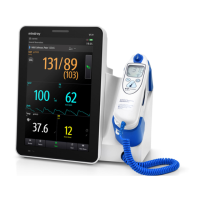21 - 1
21Maintenance
21.1 Maintenance Introduction
Regular maintenance is essential to ensure that the equipment functions properly. This
chapter contains information on periodic testing and maintenance.
21.2 Maintenance Safety Information
• To avoid electric shock, stop using the monitor if you find the housing of the
monitor has signs of broken. Contact the service personnel for help in that
case.
• Failure on the part of the responsible individual hospital or institution using
this equipment to implement a recommended maintenance schedule may
cause undue equipment failure and possible health hazards.
• No modification of this equipment is allowed.
• This equipment contains no user serviceable parts.
• Do not open the equipment housings. All servicing and future upgrades must
be carried out by the service personnel.
• The safety checks or maintenance involving any disassembly of the
equipment should be performed by professional service personnel.
Otherwise, undue equipment failure and possible health hazards could
result.
• Do not open batteries, heat batteries to above 60 °C, incinerate batteries, or
short the battery terminals. Batteries may ignite, explode, leak or heat up,
causing personal injury.
• Do not adjust, repair, open, disassemble, or modify the pulse oximeter or
accessories. Injury to personnel or equipment damage could occur. Return
the pulse oximeter for servicing if necessary.
• The service personnel must be properly qualified and thoroughly familiar
with the operation of the equipment.

